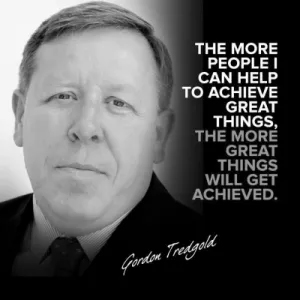
When it comes to leadership styles, the best leaders know that you need to adapt your style to different situations.
For example when you’re in an emergency situation taking a democratic approach, whilst a normally a great approach, might delay the necessary actions being taken in a timely manner, in this situation a more directive style could be more appropriate.
As leaders the more styles we can master and have in our tool kit the more effective we can be.
One of the best sources to learn more about the different styles for leadership I have come across is Daniel Golemans’ Primal Leadership: Unleashing The Power of Emotional Intelligence.
In his book Daniel identifies 6 different leadership styles, ones which i can readily associate with.
These are:
As you can see from these styles, whilst they are all different there is no one style which would work best in all situations, for sure a coaching style could be used in most situations, but it wouldn’t be the best in all.
As leaders we need to develop our abilities in each of these styles so we can increase our effectiveness by using the right style, at the right moment. As mentioned before there are even times when a coercive command and control style might be most appropriate.
We will all have one style which is more natural or more comfortable for us, for me the Coaching style is probably the one I use the most.
However, it’s not the style I usually start with, and that depends on the situation I come into, it might be Visionary if join, or take over a team, where there is good morale and we are looking to take the performance to the next level.
The Visionary style is used to inspire people and to encourage them to come on a journey with you.
Whereas the Affiliative style might be used where you are taking over a team thats not performing well, or is under stress and you want to bring the team together, increase morale and build a good team spirit.
The Democratic style is one I am likely to use when I have been in charge for a while, it’s a much more inclusive style and when the team and I get to know each other and we have built up trust, then we can be look to be more participative.
With the Democratise style it requires a high degree of maturity because we have to be comfortable giving away some of the control and decision making, and it’s probably the last one I mastered. But once you do so, it really helps drive performance to the next levels. As leaders we need to create more leaders and the Democratic style is one that helps us best achieve that.
The Pace Setting style is one where we lead by example, and show people what it is we are looking for. It can be very effective when taking over a low performing organisation, but we need to ensure that we don’t set an example that others cannot live up to. When we do that it becomes demoralising rather than motivating.
Lastly the Coaching style, this is one of my favourites because it allows me to work with people, to help develop them, and I find it the most relaxing and rewarding. It encourages people to lead themselves, but it takes time to get to this state.
In my last company, over a 5 year period I would say I had to practice all 6 styles, initially Affiliative looking to bring people together and bring them into one organisation, Coercive when we were dealing with the system outages, and Pace Setting when I wanted to increase the urgency with which we operated.
Then as our performance started to increase I could adopt the Visionary style to show where I wanted the team to go, to build a vision for the future and inspire them.
Once we had the agreed Vision, I used the Democratic style to get the team to contribute to how we would achieve that Vision. As the saying goes, no involvement no commitment, and I wanted the team to take ownership of the Vision. Then as we started to move towards it and we had the basis of a winning culture, then I could adopt the Coaching style, making small changes and leaving the organisation to lead itself.
As you can see, as leaders, we need to have all styles available to us in order to be the most effective in all situations.
If there are any styles which you find difficult or which are not natural to you, then we need to work on them and practice them because we will definitely find ourselves in situation where those styles would be best suited.
If you want to find out more about different leadership style, and how you can improve your leadership, then email me at gordon@leadership-principles.com and we can arrange a free 30 strategy session.
